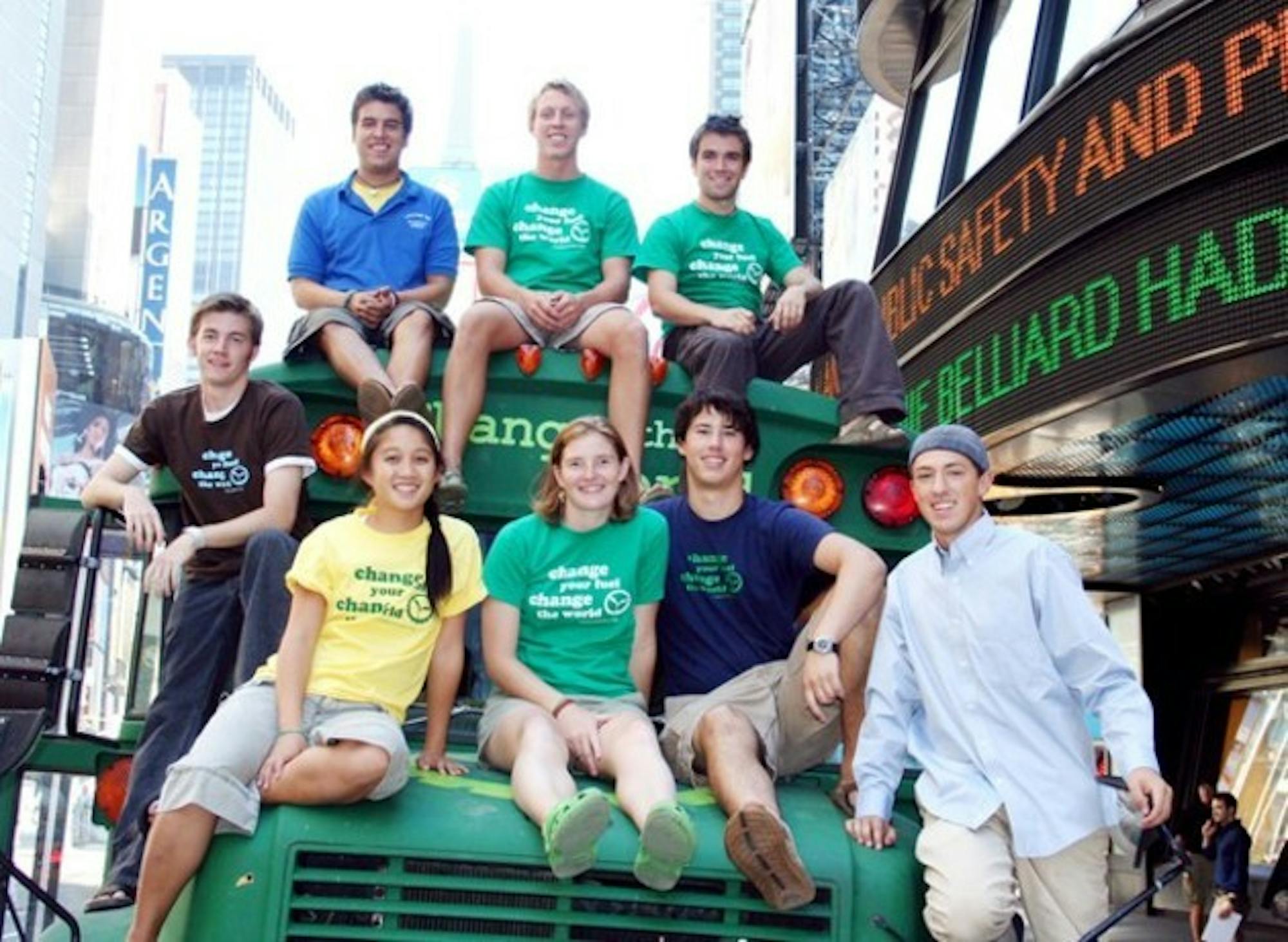Anchorman Bill Weir introduced the student project as "a group of Dartmouth students [who] want to make a statement about our dependence on foreign oil, about safety of the environment, clean fuel and all of that."
The three minute Good Morning America segment, which aired on Wednesday, showed the bus and 13 student and alumni "bussers" at a stop on the eighth week of their 10 week tour around the country.
The bus, which is a run-down '95 International school bus that was converted so that it runs on waste vegetable oil, mystified observers, on and off camera.
"I think we're all fascinated by it," Feature Correspondent Mike Barz said to The Dartmouth after the show.
"It doesn't surprise me that it's Dartmouth. You guys have been at the cutting edge of so many different things," News Anchor Robin Roberts said in an interview with the Dartmouth.
Craig Rubens '06 and Vivien Savath '06 drew several laughs with their colorful responses on camera, such as when Rubens described the smells that come from the bus.
"One day the exhaust will smell like kung pow chicken. The next day it will smell like French fries," he said.
The other bussers appeared on television as well. Michael Saladik '06 and Forrest Hanson '06 demonstrated pumping the vegetable oil, and Stephanie Lawrence '06, Elliot May '06, Andy Wright '06 and Andrew Zabel '09 sat on top of the bus.
"I wish I could have talked about viable options that are available now, but I did not get to do that." Rubens said, commenting about the brevity of the segment.
Rubens did manage to explain on camera how they fuel the bus by asking for the waste oil from restaurants, and the environmental advantages to using waste vegetable oil, that it does not release sulfur-oxides, and that it is carbon-neutral, which means the carbon-dioxide released from the exhaust is not additional to that already loose in the atmosphere.
Savath said that the enthusiastic response they received with Good Morning America in New York City was typical of what they've seen around the country.
"The response has been amazing," Savath said on air.
"There are people who are interested in it because it [means] jobs for farming in the Midwest, they're interested in it because of reducing dependence on foreign oil, they're interested ... just for the pure environmental reasons."
The Big Green Bussers have spent the summer traveling in the bus across the country to major concert venues and popular foot-traffic areas to raise awareness of the damages to the environment and the availability of alternative fuels, embracing their cause and their accommodations.
"You can tell [the bus has] been lived in. You can tell that it's college students. You can tell it's been a home for a while," Roberts said as she signed off from the front seat of the bus.
"It had a certain kind of essence that lets you know ... there's a lot of love."
After the live airing, the bus headed to Central Park, where the bussers spoke about the mission to passersby, handed out literature and invited interested parties to take a look inside the bus.
The stop in New York City gave the bus the most publicity it has ever received since its creation in 2005, but the bussers are more concerned about the reception of their message than the personal fame.
"This is going to be the place that reaches the most people. We've been talking to lots of people the entire time, and it doesn't amount to the number of people watching Good Morning America," Saladik said.




